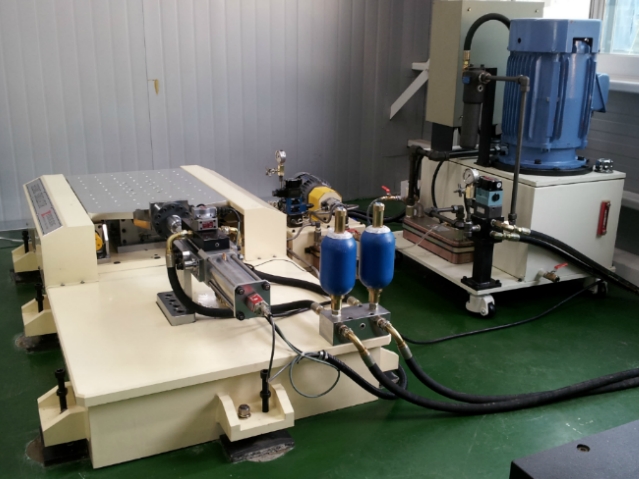 Seismic Simulator
Seismic Simulator
SS300 – Hydraulic Seismic SimulatorActive Mass Damper System
Shaking Table for Structure
The object of Seismic SimulatorHorizontal Shaking Table for Structure Test.
The primary goal of this simulator is to instruct concepts in structural dynamics, earthquake resistant design, geotechnical engineering, and more generally,.
The primary goal of this simulator is to instruct concepts in structural dynamics, earthquake resistant design, geotechnical engineering, and more generally,.
The experiments focus on the use of seismic simulation experiments which offer students opportunities to operate the shake table, excite scaled models of various civil engineering structures (e.g.,buildings, bridges, towers, etc.) with typical earthquake loads, learn basic concepts in structural dynamics, and utilize sensors to measure responses of the structures.
Experiments are being developed for students at all levels – from freshman level
introductory courses through senior/graduate level courses. The basic strategy behind the
program described herein is to work collaboratively to achieve the project objectives,
resulting in a well-rounded series of experiments that are geared for undergraduate
students at all levels.
Experiments are being developed for students at all levels – from freshman level
introductory courses through senior/graduate level courses. The basic strategy behind the
program described herein is to work collaboratively to achieve the project objectives,
resulting in a well-rounded series of experiments that are geared for undergraduate
students at all levels.
The specific objectives of these activities are:
The shake table is controlled by a Pentium computer using Seismic Graph software.
The package comes with several historical earthquake records. Time and amplitude scaling is
readily implemented using the provided software.
The shake table is controlled by a Pentium computer using Seismic Graph software.
The package comes with several historical earthquake records. Time and amplitude scaling is
readily implemented using the provided software.
In addition to the shake table, the laboratory package purchased includes a two story test structure and three accelerometer to measure the excitation and system responses.
The package also includes a stand-alone function generator for off-site demonstrations. The complete package allows students to reproduce earthquakes, observe structural behavior, measure structural responses, and utilize sensors and modern computer control systems.
Further the system purchased facilitates off-site demonstrations and other outreach activities.
A control box allows the student to dial in the desired frequency. When the building finally succumbs to the seismic onslaught, the control box indicates the structure's earthquake performance rating.
TEST STRUCTURE
A modular three to five story test structure has been designed and constructed for use in evaluating structural control strategies. The structure is designed to be modular so that structures with up to six floors can be tested.
At each floor, two steel plates simulate the mass of the floor of a building. Thus, a variety of structures can be tested by varying the number of stories and the mass at each floor.The first six natural frequencies of this structure fall below 11 Hz.
Outline
Hydraulic Seismic Simulation Systems can be generally categorized by the degrees of freedom,i.e. uniaxial systems and multi axial systems.
Hydraulic Seismic Simulation Systems can be generally categorized by the degrees of freedom,i.e. uniaxial systems and multi axial systems.
Single axis systems are available in a wide range of sizes and displacements and multi axis systems add the capability of up to six degrees of freedom.
Illustrated is an example of a single axis seismic test system appropriate for testing articles weighing upwards of 1 ton..
- Consists of a from 600X800mm size aluminum sliding table
- Mounted on high precision, low-friction, hydro film linear bearings
- Weighing upwards of 1 ton.
- Operational frequency range of 0–50 Hz,
- Stroke of 150mm (6 in),
- Velocities of over 750mm/sec (30 in/sec),
- Imparting accelerations of greater than 4 g's to a 907 kg (1 ton) test load.
- Optional modular three to five story test structure
The simulator also equipped with a three to six story test structure, a 16-channel spectrum
analyzer/data acquisition system, a DSP-based real-time digital control system, a dynamic load frame for device characterization, and a variety of sensors.
analyzer/data acquisition system, a DSP-based real-time digital control system, a dynamic load frame for device characterization, and a variety of sensors.
